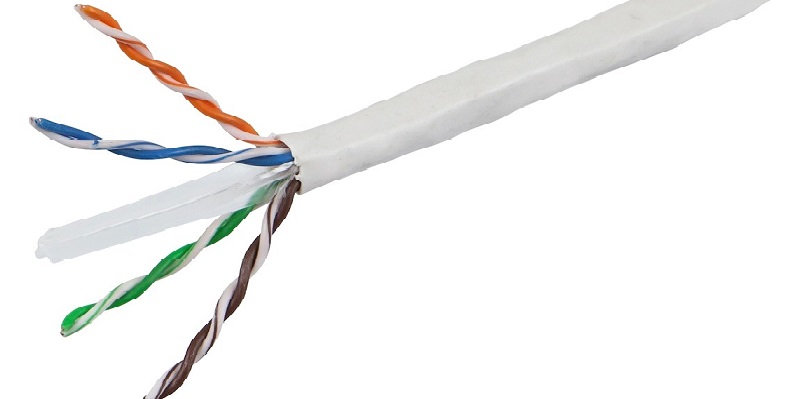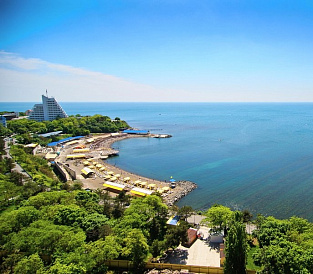Compare Cat 5e and Cat 6 standards - what’s better and what’s the difference
Network technologies are constantly evolving; the old provide an ever-increasing bandwidth. And telecommunications equipment is also being improved. It would be strange if today's terabit data volumes were transmitted over some kind of two-wire ADSL, right? Therefore, it was replaced by Ethernet, and then fiber in general.
However, Ethernet has become the accepted standard for the construction of local networks. He made such cross-compatibility of equipment and ease of laying lines. However, with the growth of the transmitted data, there is a need to increase the bandwidth of Ethernet.
And so new categories of Ethernet interface began to appear. The most common in local networks at the moment (2019) are Cat 5e and Cat 6. These standards provide sufficient performance to work on a LAN and connect computers, servers, and other telecommunications equipment.
Nevertheless, there is a difference between these standards, and quite significant. Consider both.
Cat 5e Standard

The Cat 5e Ethernet standard is intended for use in low-load networks, as it is designed to transmit a signal at a frequency of 100 MHz. Its design includes a nylon thread, which increases strength, resistance to tearing and bending. However, the shell (cambric) wire is relatively thin, which makes it quite vulnerable to the appearance of interference.
But thin shell repeatedly simplifies the gasket. Such wire bends better and therefore can be used for installation in difficult conditions.
Cables of this standard are available in three versions - UTP, FTP and SFTP. The first ones are unshielded and therefore suitable for building networks that do not require high protection of transmitted information from interference. For example, for home or office use. But STP-type cables are already complemented by a screen that protects against interference. They are designed for high-precision transmission of information in special conditions, as well as for laying about sources of electromagnetic fields (including electric motors in refrigerators and vacuum cleaners).
SFTP is intended for use near powerful sources of electromagnetic fields - generators, transformers, electrical substations. It is shielded and each twisted pair, and all four pairs under the shell (cambric).
But the main thing is that the maximum data transfer rate over the category 5e interface is 1 gigabit per second. PoE supported. The maximum laying length without amplification or connection to the “bridge” is 100 meters.
Cat 6 Standard

The Cat 6 standard is designed specifically for use in high-load networks. Its design includes highly woven twisted pairs with a large number of turns per linear centimeter. Thanks to this cable can withstand data transmission at a frequency of 250 MHz.
Increasing the frequency of the transmitted signal allowed us to increase the bandwidth of the interface. Networks based on it and the appropriate hardware support 10 Gigabit Ethernet.
Structural wire of the sixth category differs from its predecessor and the increased thickness of the shell.This helps to protect the transmitted information from external electromagnetic interference and interference from other cables, including power cables.
The “sixth category” is also available in shielded and unshielded versions. A SFTP version with two screens for laying near powerful sources of electromagnetic fields is also present.
This type of cable has one very important feature - the maximum transmitted frequency depends on the length of the wire. That is, the above 250 MHz wire is capable of transmitting only if the distance from the transmitter to the receiver does not exceed 55 meters. And with an increase in its cable "cope" with only 100 MHz.
As a result, the highest throughput of 10 gigabits per second is achieved only with a length of up to 55 meters. With a greater distance between the receiver and the transmitter, it is only 1 gigabit per second. And the maximum length is 100 meters. Power transmission PoE is also supported.
Difference between Cat 5e and Cat 6
We summarize the information on these two standards in a comparative table:
|
Characteristic |
Cat 5e |
Cat 6 |
|
Support 10 Mb / s |
there is |
there is |
|
100 MB / s support |
there is |
there is |
|
Support 1 Gb / s |
there is |
there is |
|
10 Gb / s support |
Not |
Yes, but with distance limitations |
|
Power over Ethernet support |
there is |
there is |
|
Maximum transmit frequency, MHz |
100 |
250 |
|
Maximum length, m |
100 |
100 |
|
Strengthening structural elements to increase bending and tensile strength |
Nylon thread |
Thick shell |
|
Shell thickness |
Relatively small |
Relatively large |
|
Screen options (FTP, SFTP) |
there is |
there is |
|
Comparative number of turns of a pair per unit |
Small |
Large |
|
Scope of use |
Home, office |
High Load Networks |
At the same time, it is worth noting that the maximum throughput is indicated as recommended, but not limit. According to the research, with short-term transmission over short distances (up to 30-40 meters), the 5e interface will cope with a 10-gigabit load, and the “sixth category” will withstand 500 MHz.








